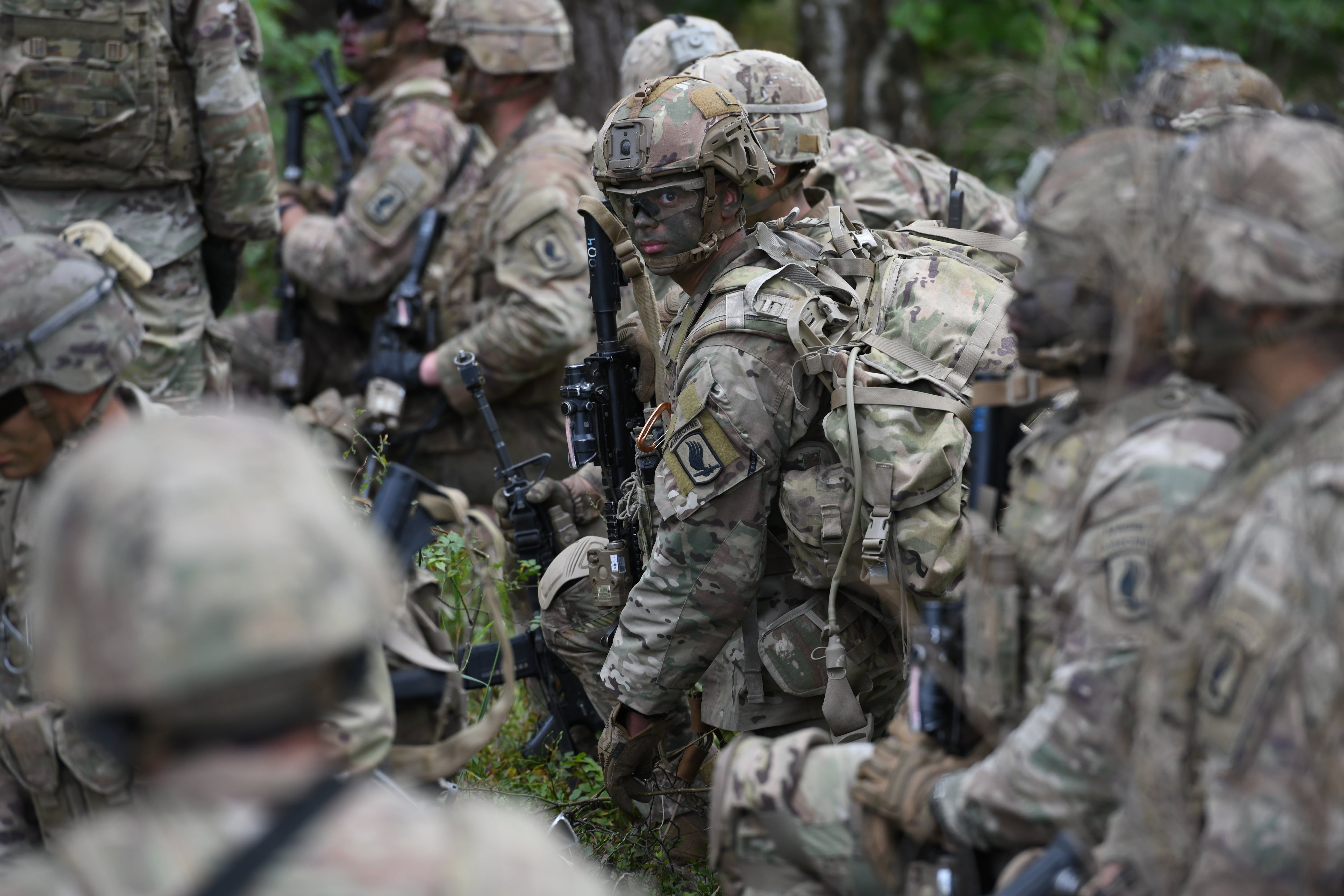In recent years, the Army has poured resources into its armor and fires, resuscitating branches that languished during the counterinsurgency wars of the previous decades.
But the service hasn’t forgotten its infantry as leaders hammer on the point that the Army dominates the land, and the infantry must seize and hold terrain in any future battle.
And the field is changing, with more female officers and soldiers heading to combat arms in general and infantry, as well as a more technology-enabled soldier and squad combination that leaders expect to have an outsized impact on future warfare.
Brig. Gen. Larry Burris is at the center of those efforts, serving both as director of the Cross Functional Team-Soldier Lethality and commandant of the Infantry School.
The school instituted an extended, 22-week One Station Unit Training model in 2018 following a study that showed new grunts were arriving at their units undisciplined and out of shape.
Burris told Army Times that about 43,000 soldiers have gone through the course and 38,000 have graduated. But the school trains all infantry from entry-level enlisted to mid-career officers.
OSUT is under a review that might adjust some of the training to add more large-scale combat elements. Such changes, leaders hope, will provide more of a focus on peer adversaries.
Demographics of the infantry career field are changing, as well.
Burris noted that 67 female lieutenants became infantry officers this past fiscal year. That’s an increase from 22 in fiscal year 2021.
“There’s a lot of talent out there that I think we leave on the table,” Burris said. “So, a lot of effort has been going into diversifying the branch, not for the sake of diversity, but for the sake of talent identification.”
Infantry officers now also get a close quarters lethality week, which reintroduces 40 hours of combative training, bayonet training and other tactical work.
“When I got here, the lieutenants were not doing the night infiltration course like our enlisted soldiers,” Burris said. “So, our enlisted soldiers knew what happens when that first round cracks over their heads, but our lieutenants weren’t getting that.”
“So now, they do, and some less exciting, but vital training for young leaders,” he added.
New infantry officers now also get practice with inventory recordkeeping, maintenance tracking and other skills that will help them run a platoon, company or really any formation.
And for those seeking more challenges, the school has a “reinvigorated” Ranger certification program. That includes a two-week preparation course that runs through all the events they’ll face in the Ranger assessment phase.

“We’ve seen pass [rates at the Ranger Assessment and Selection Program] in that first week shoot from about 51% ... to 91% of lieutenants passing,” Burris said.
And Army research shows that if a soldier passes in the first week of assessment, they’ll have an 84% chance of passing the actual course, Burris added.
Additionally, Burris said that they’ve increase the leadership repetitions for the new officers. A few years ago, a lieutenant might only have two to three opportunities to lead a formation in training. Now that number has gone up to 12 graded leadership opportunities.
The training itself has changed, too.
Like the rest of the formations in the Army, the Infantry School is now increasing their focus on large scale combat and away from past decades’ counterinsurgency work.
Pushing past training, Burris’ other job is running the CFT-SL and that group is keen on fielding two major systems: the Next Generation Squad Weapon and the Integrated Visual Augmentation System/
The NGSW is the Army’s M4 replacement for the close combat force. The Army chose Sig Sauer to build both the rifle and automatic rifle variants, as well as its new ammunition, 6.8 mm. The NGSW comes with an advanced optic that can link wirelessly to night vision and other devices.
“I think it’s important to remember that it isn’t just a weapon, it’s the rifle, the automatic rifle, the family of ammunition and the fire control,” Burris said.
The other big-ticket item, IVAS, is a futuristic “mixed reality” goggle that will provide night vision, thermal vision and all-around situational awareness to individual soldiers at the squad level.
The device integrates with the Bradley Infantry Fighting Vehicle and the Stryker vehicle. It can also transmit data between soldiers and pilots in certain helicopter experiments using wireless routers, Burris said.
The Stryker experiments caught the general’s attention.
“You look around and it’s as if there’s no armor on the vehicle,” Burris said. “I turn my head to the right and it automatically detects the camera that’s off the right side of the vehicle.”
All that gives the soldier about to dismount something previously unavailable — a view outside before they head into the fight.
Todd South has written about crime, courts, government and the military for multiple publications since 2004 and was named a 2014 Pulitzer finalist for a co-written project on witness intimidation. Todd is a Marine veteran of the Iraq War.




